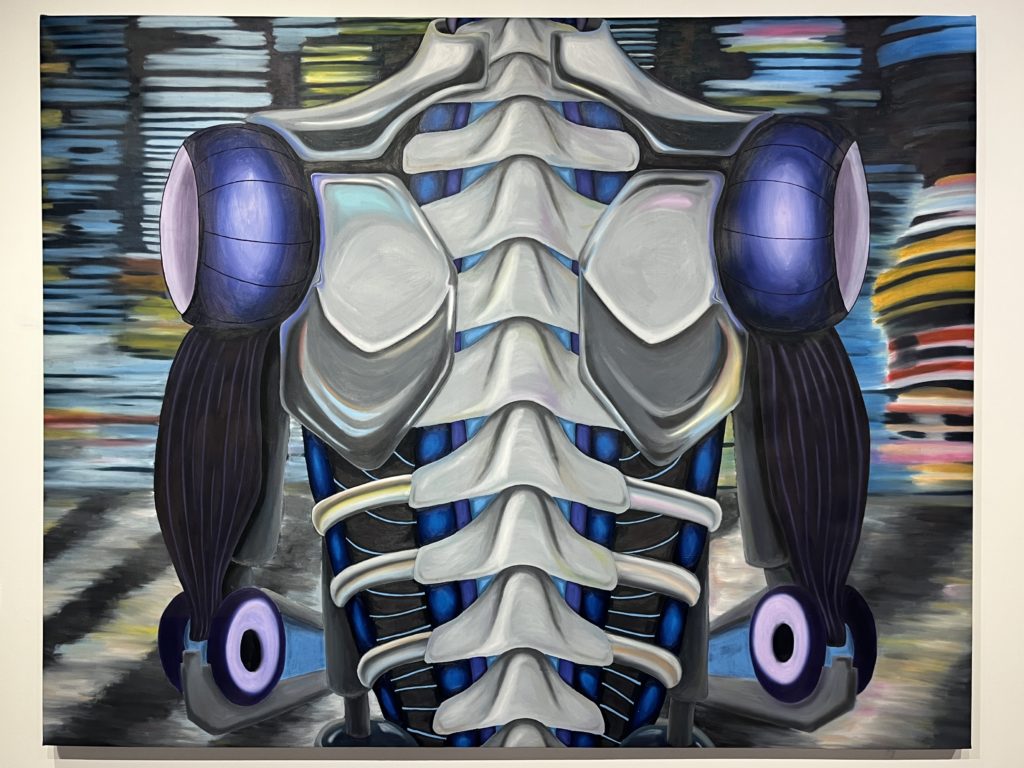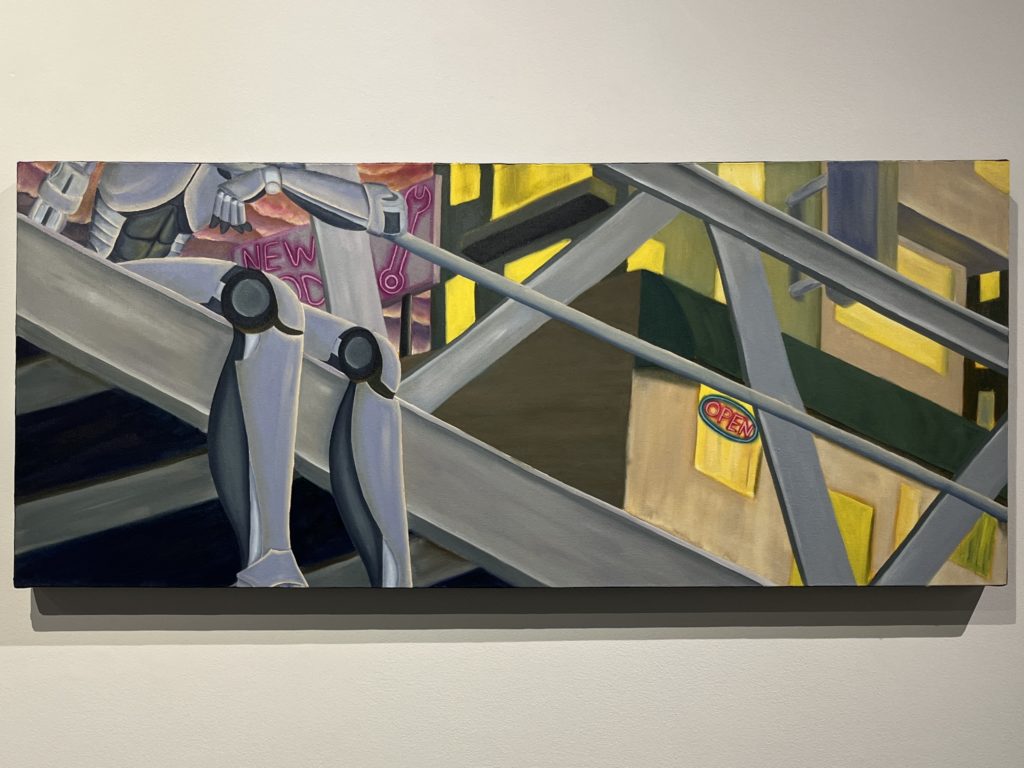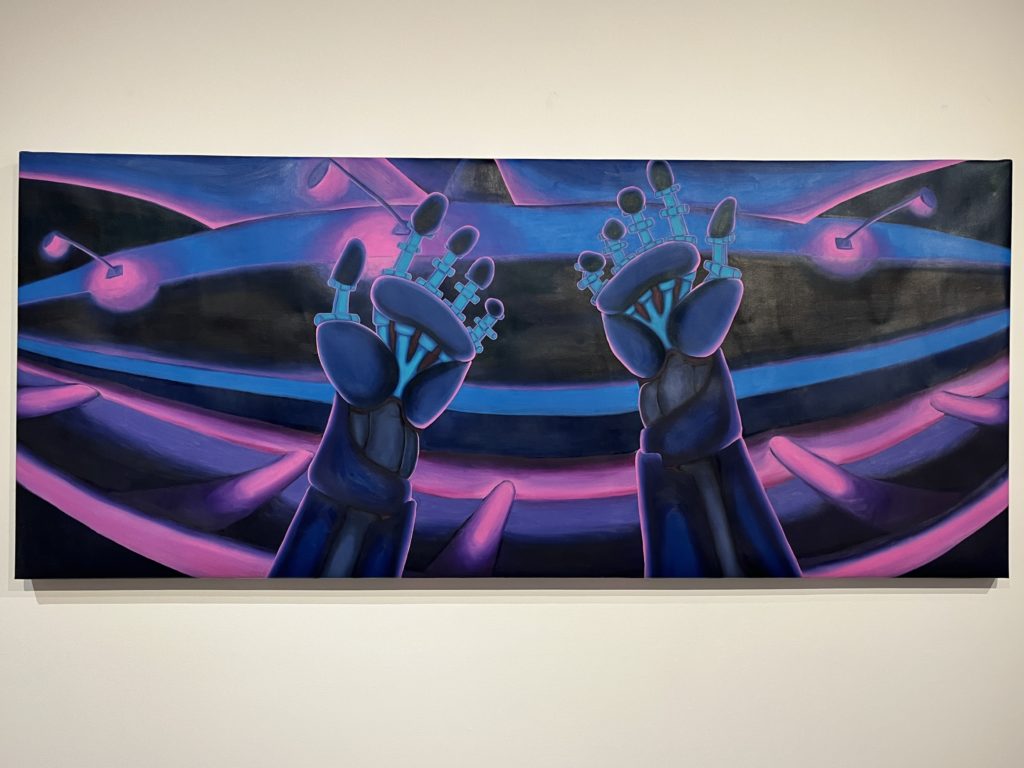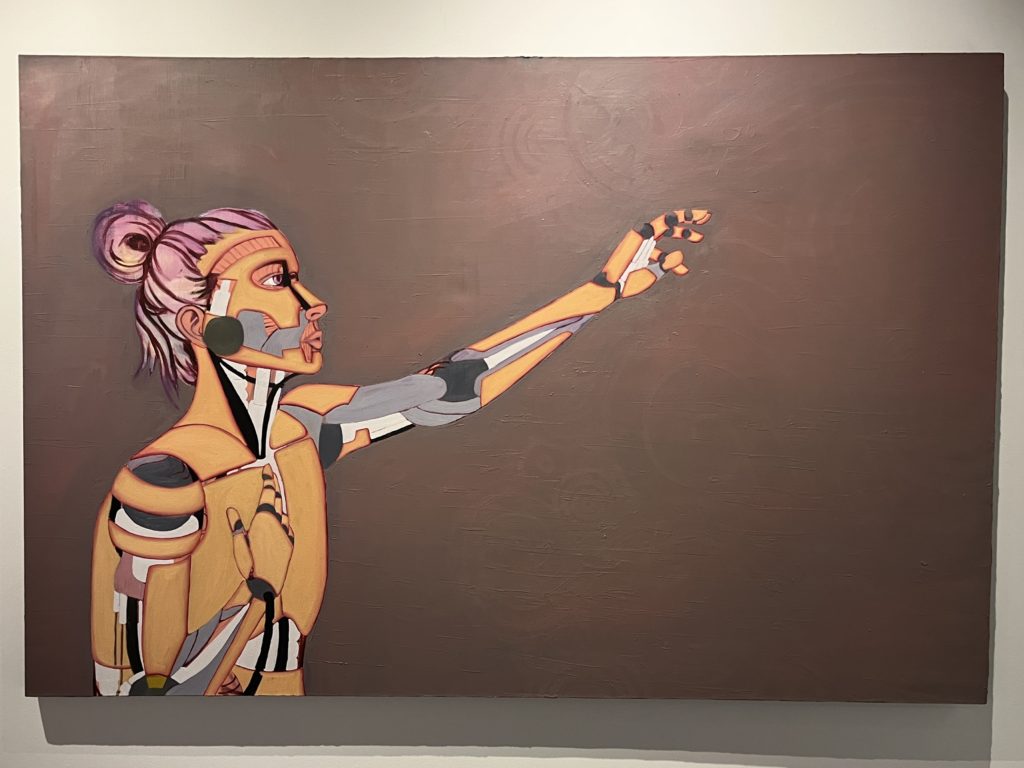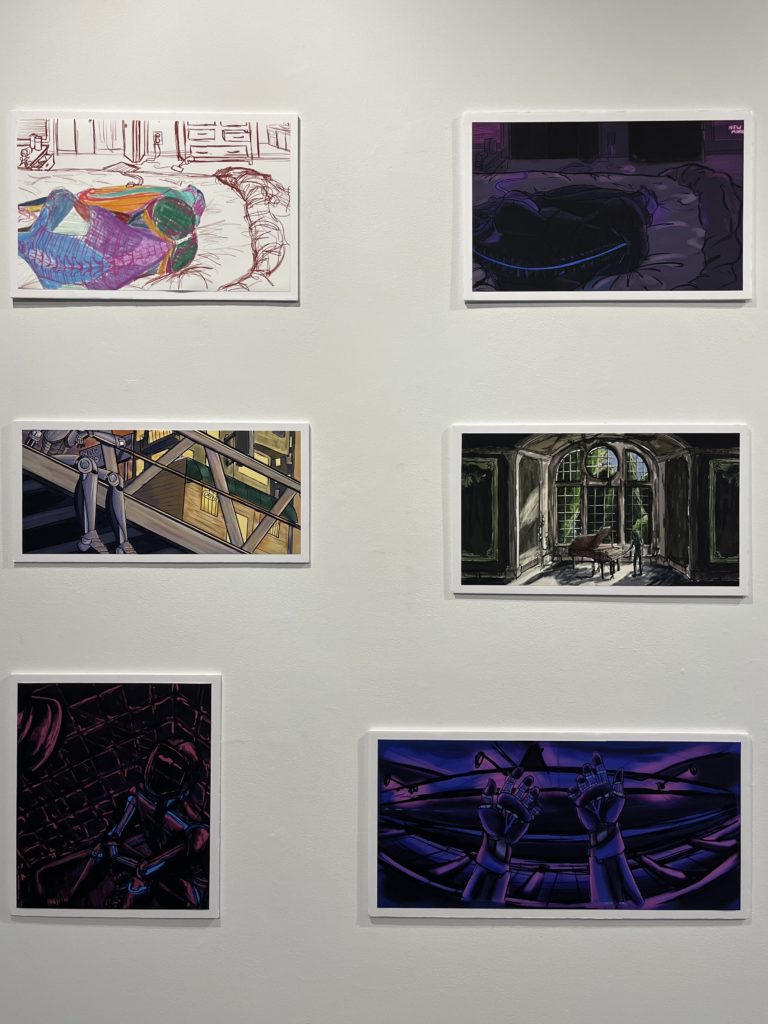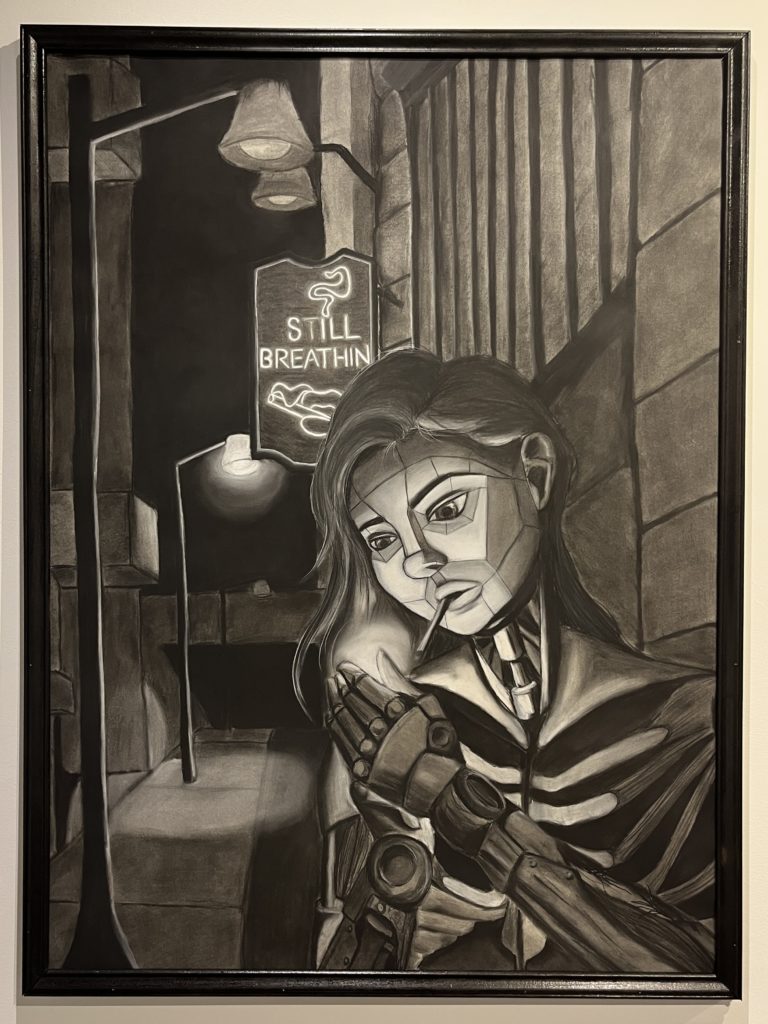Jordyn Sayther
November 29 – December 9, 2022
Closing Reception: December 9, 2022 @ 6:00PM
Growing up in a digitally obsessed society, I explore the concept of digital dependency and the ways that humanity could potentially change. By breaking down human anatomy and replacing the structures with mechanical parts, I place these mechanical figures in a world that is so close to our own that it seems plausible for these figures to exist along with us. This uncanny valley that I have created for these figures to live in is the CyberNoir.
A cyborg, defined by Manfred Clynes and Nathan S. Cline in the 1960’s, is classified as a being that has a combination of organic and biomechanical body parts. Not to be confused with androids (a humanoid robot that is completely artificial), cyborgs are organisms that have enhanced areas of the body by adding mechanical body parts. The film term Noir comes from the old French filmmaking technique that uses pessimism, dramatic lighting, and romanticism of the darker parts of the human psyche to get an audience to imagine a world that is terrifying and exciting at the same time. By combining these two ideas, I have created the CyberNoir; a romanticized, digital universe inhabited by these enhanced beings.
I feel that cyborgs are a useful metaphor. After witnessing how quickly technology has been advancing over the past twenty years and seeing the impacts it has had on our world, I don’t think this universe is as far from our reality as we think. Humans are already able to alter every part of their bodies from cosmetic procedures, prosthetics, gender affirmation surgeries, and body modifications that can be as simple as an ear piercing or as extreme as putting cosmetic metal implants underneath your skin. All of these instances are designed to help humans feel more comfortable within their own bodies, so I push the current boundaries to build these cyborg figures to portray how far one may go to modify themselves.
These pieces display how society values the digital as much as, if not more than, the human. People gasp louder when an iPhone is dropped than when a human trips or falls. By creating these cyborg figures and placing them in a natural setting, will people care more or relate more to the figure because of its digital nature?

